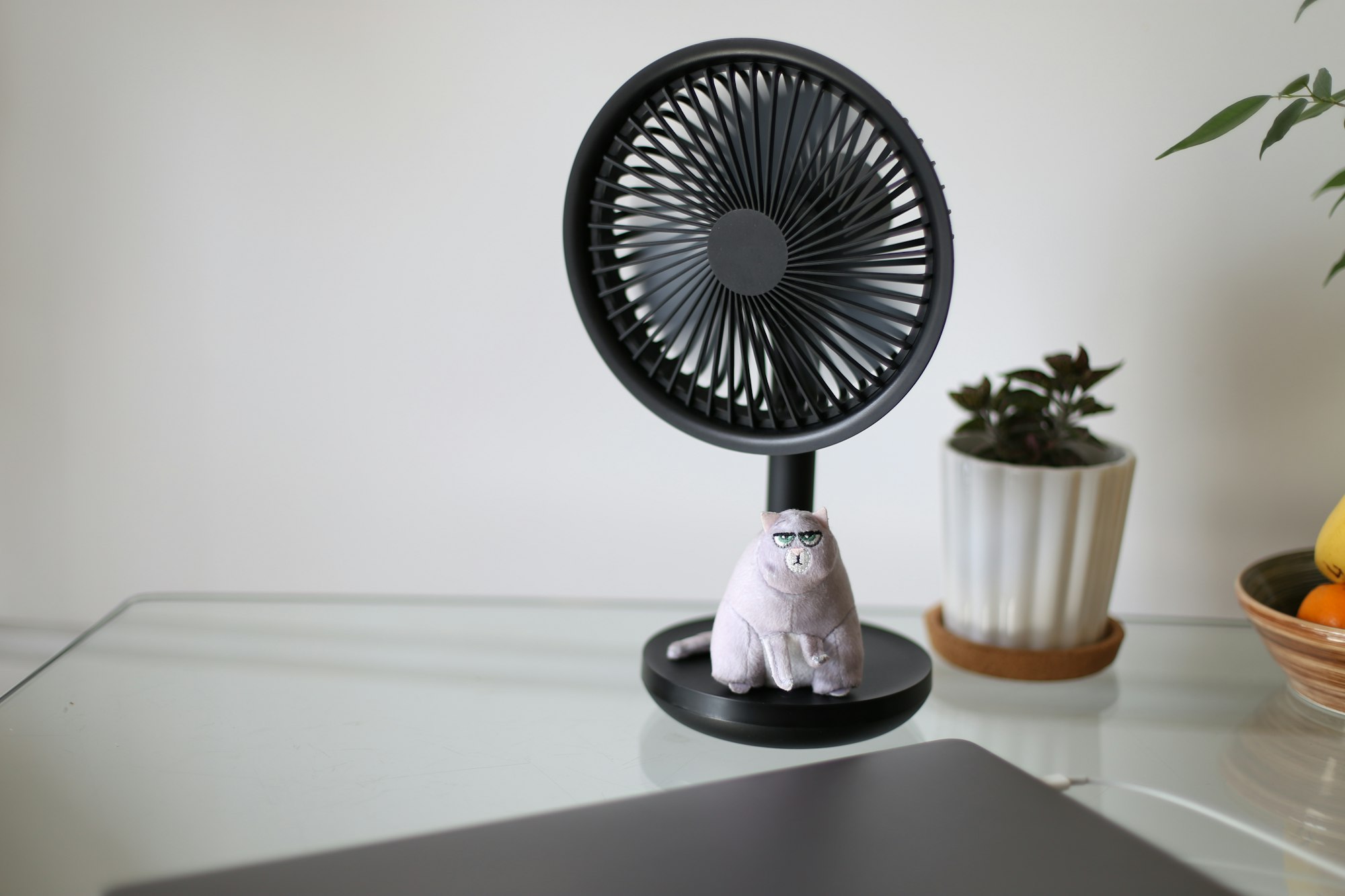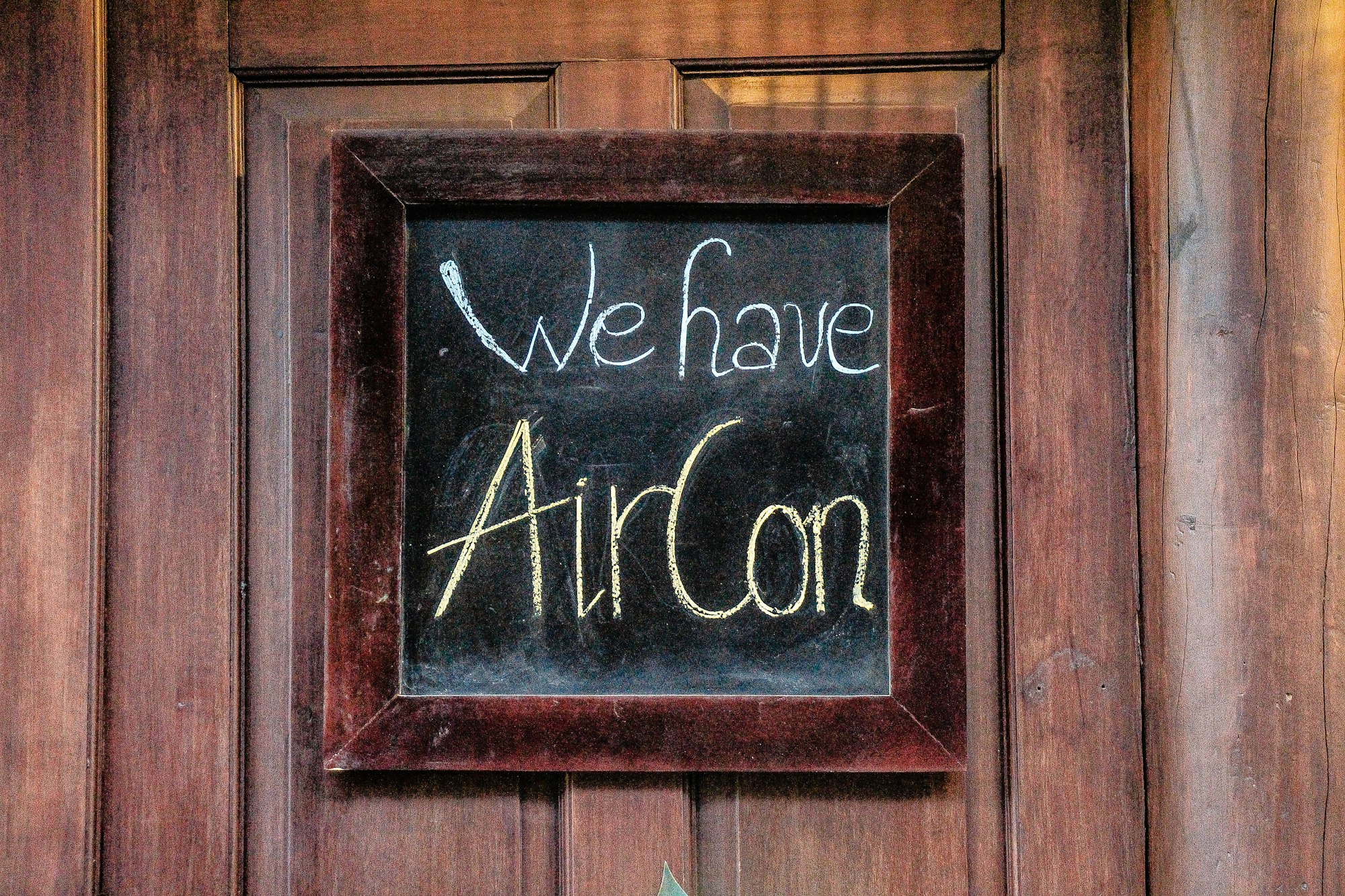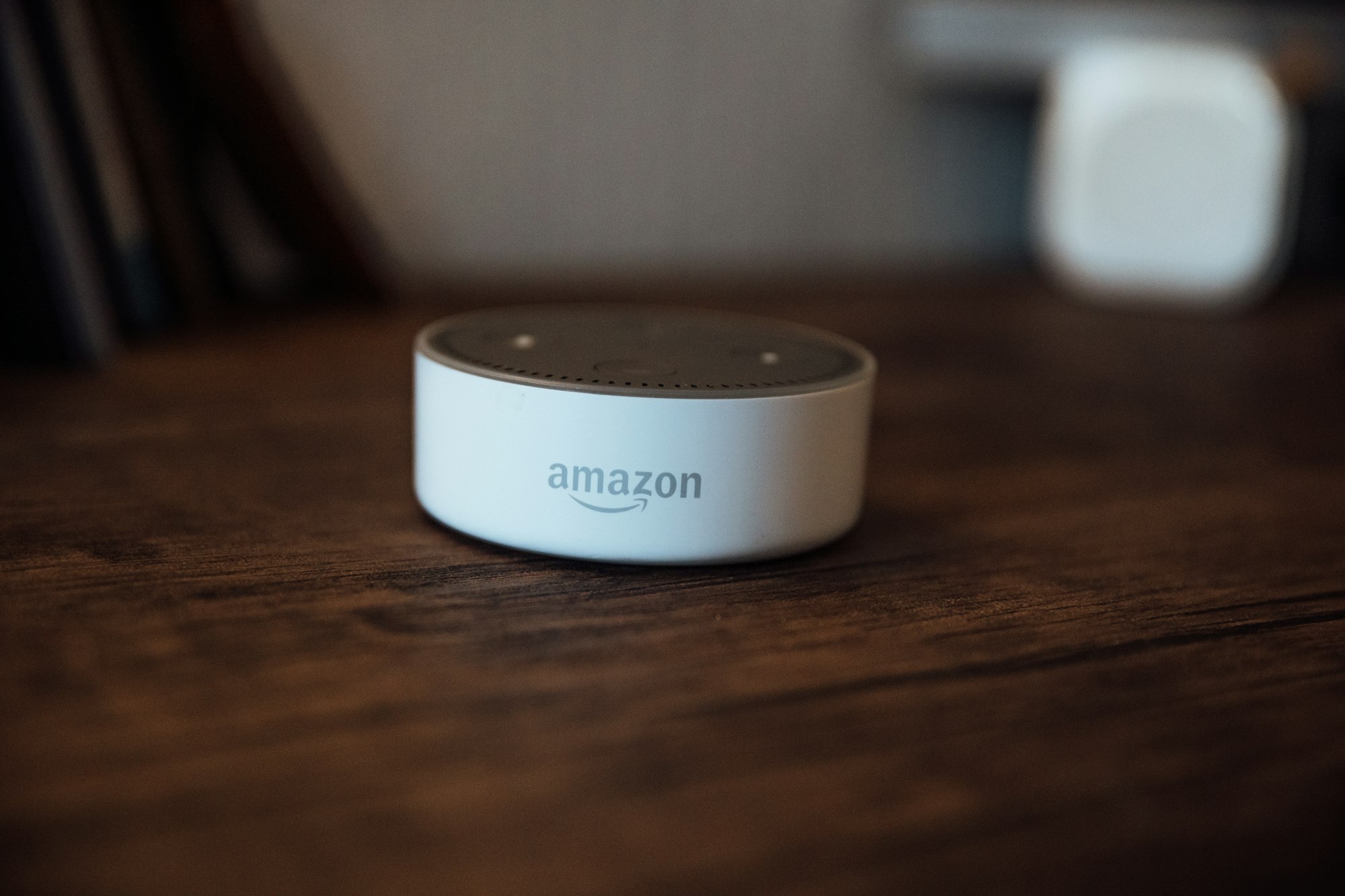
Keeping cool in your home office
In an office, you have little or no control over the cooling environment, but at home you have full control so you can set up a solution that works well for you.
The cooling solution will include several factors, including:
- Air temperature and humidity
- Are you in an enclosed room?
- Size of your room
- Is it a shared space?
- Noise
- Budget
- Portability
- Suitability to room type
- Automation
Close the Windows, Blinds and Curtains

When the air is hotter outside than it is inside, the windows should be closed, else you will just let the hot air in.
Adding blinds and curtains to the side of the house that faces the sun (South if you’re in the Northern hemisphere and North if you’re in the Southern hemisphere) is a good way to prevent the ‘glass house’ effect.
If you want to be fancy, you can get blinds and curtains that link to home automation, so you can control them with your voice or with the weather.
Open Doors and Windows

Okay, I know I just said to close all the windows, but sometimes it helps to get a breeze across your skin. Get a through-draft by opening windows on opposite/adjacent walls.
Also, remember that heat rises, so if you’re working downstairs, try opening the windows upstairs.
Fans

Fans come in a variety of formats:
- Desk fans
- Floor fans
- Tower fans
- Ceiling fans
They don’t cool the air in the room, but they provide a ‘cooling effect’ by blowing air on you to evaporating sweat.
You should consider getting a fan that doesn’t get in the way (e.g. don’t get a desk fan if you don’t have much space on your desk) and isn’t too noisy, some fans have a decibel rating.
Two things to try:
- Face a fan at an open window, to expel hot air
- Place a bowl of ice and icy water in front of the fan
Most fans are easy to move, so might be a sound investment if you want to use it for the office during the day and lounge/bedroom at night.
Air Conditioning Units

Air conditioning units serve two purposes:
- They cool the air
- They take moisture out of the air
Air conditioning units are great – if you have one integrated into your house that’s perfect! If you have a floor-standing one, be aware that you will need to place a hose from the unit, out through an open window (to expel the hot, stifling air). Also, they are often quite loud in operation. You need to match the air conditioning unit to the size of your room – don’t get one that is too small to cool the room, or one that is too powerful as this will be a waste of money and it might be physically larger than you need.
Get Smart

Some devices come with ‘smart’ technology built in. For those that don’t (e.g. a basic fan), you might want to plug them into a smart plug, then utilise services like Alexa to:
- Control devices with your voice
- Control devices with a timer (e.g. turn on/off at defined times, ensuring you don’t waste money)
- Control devices via the weather/temperature (e.g. only turn on if it’s hot)
- Monitor how much electricity the devices use
